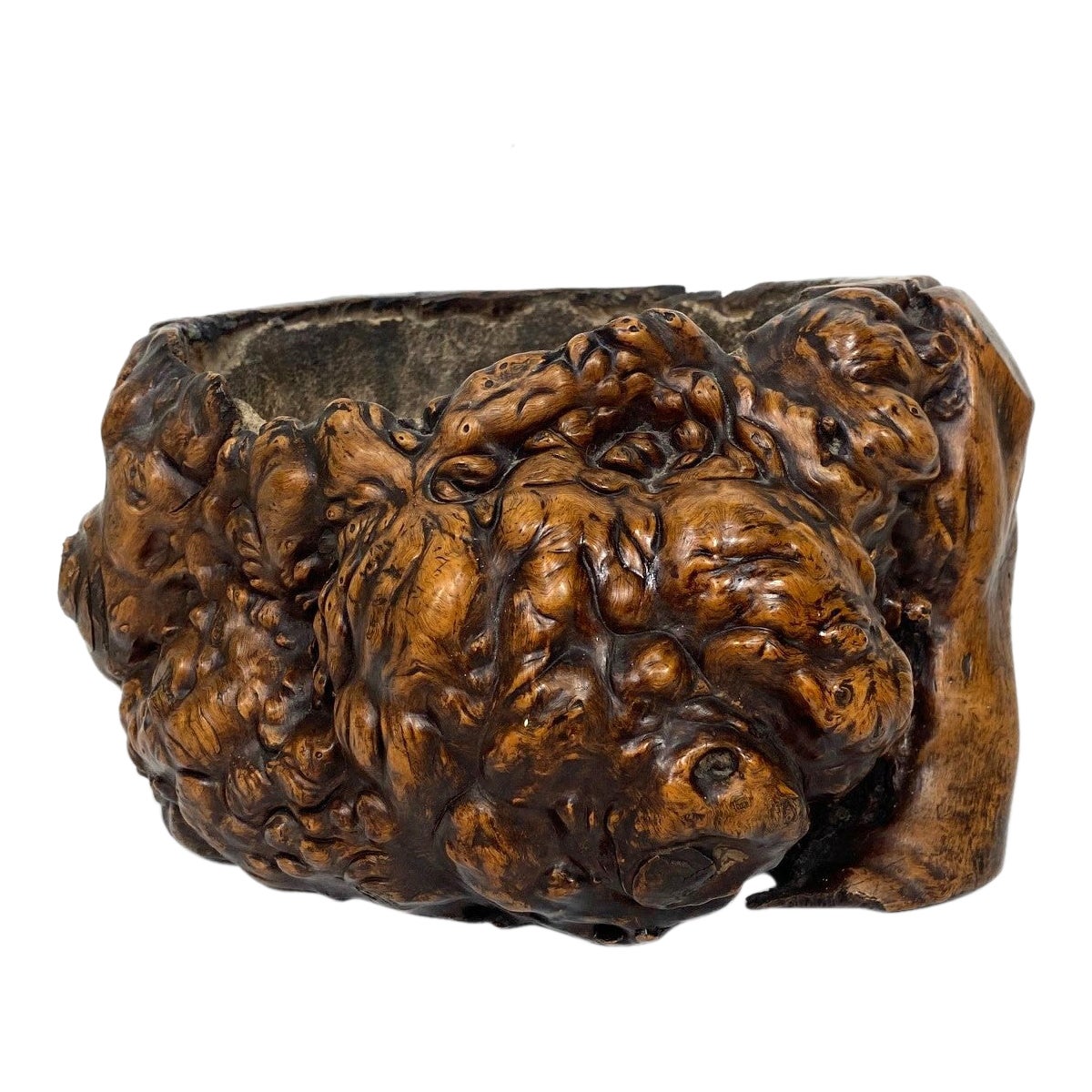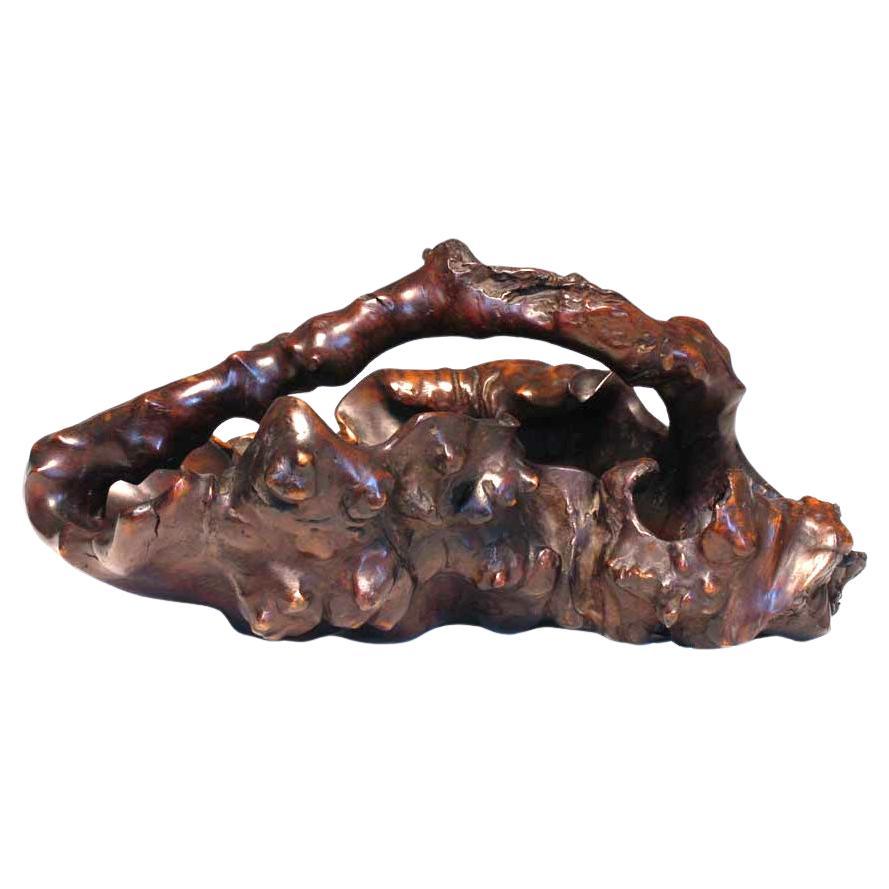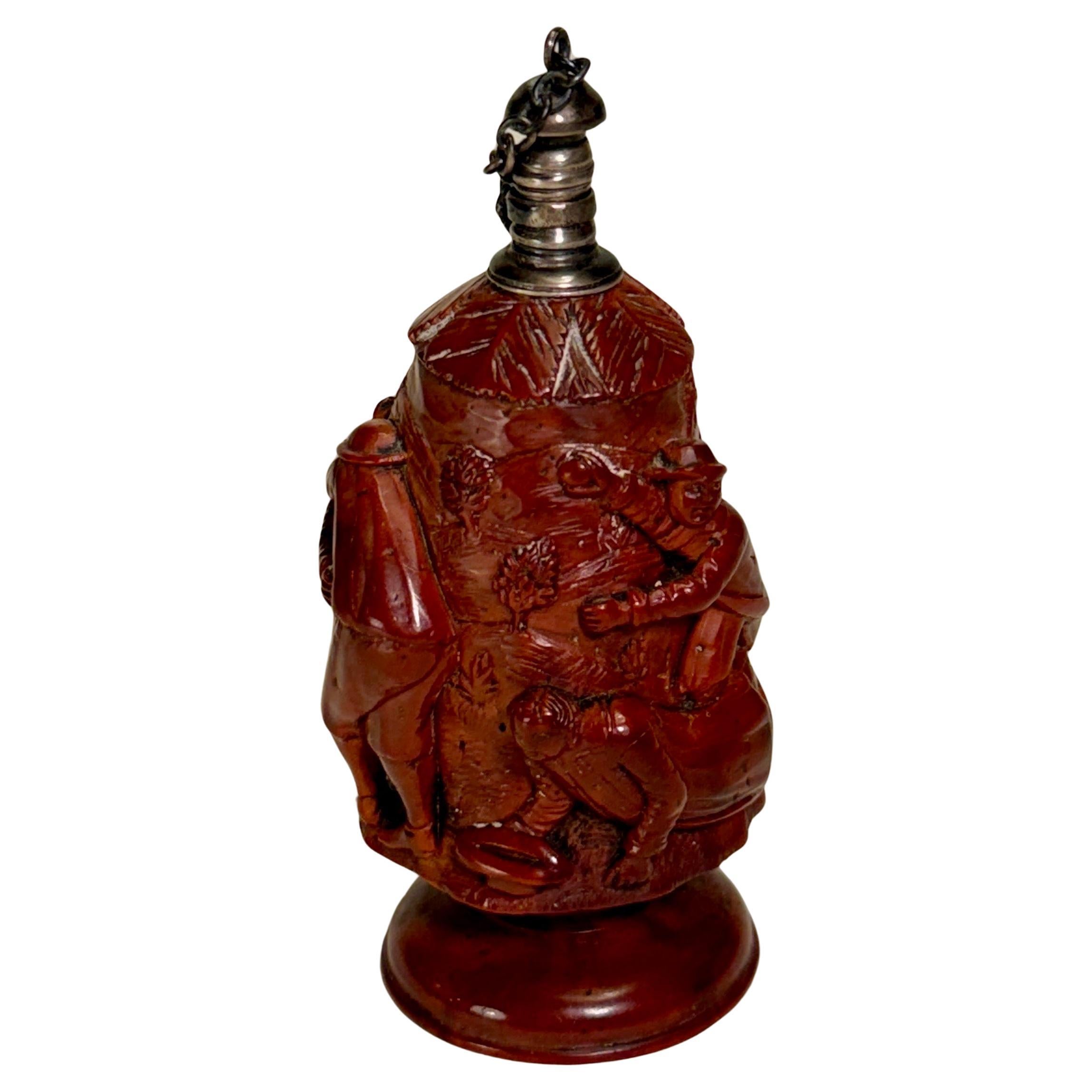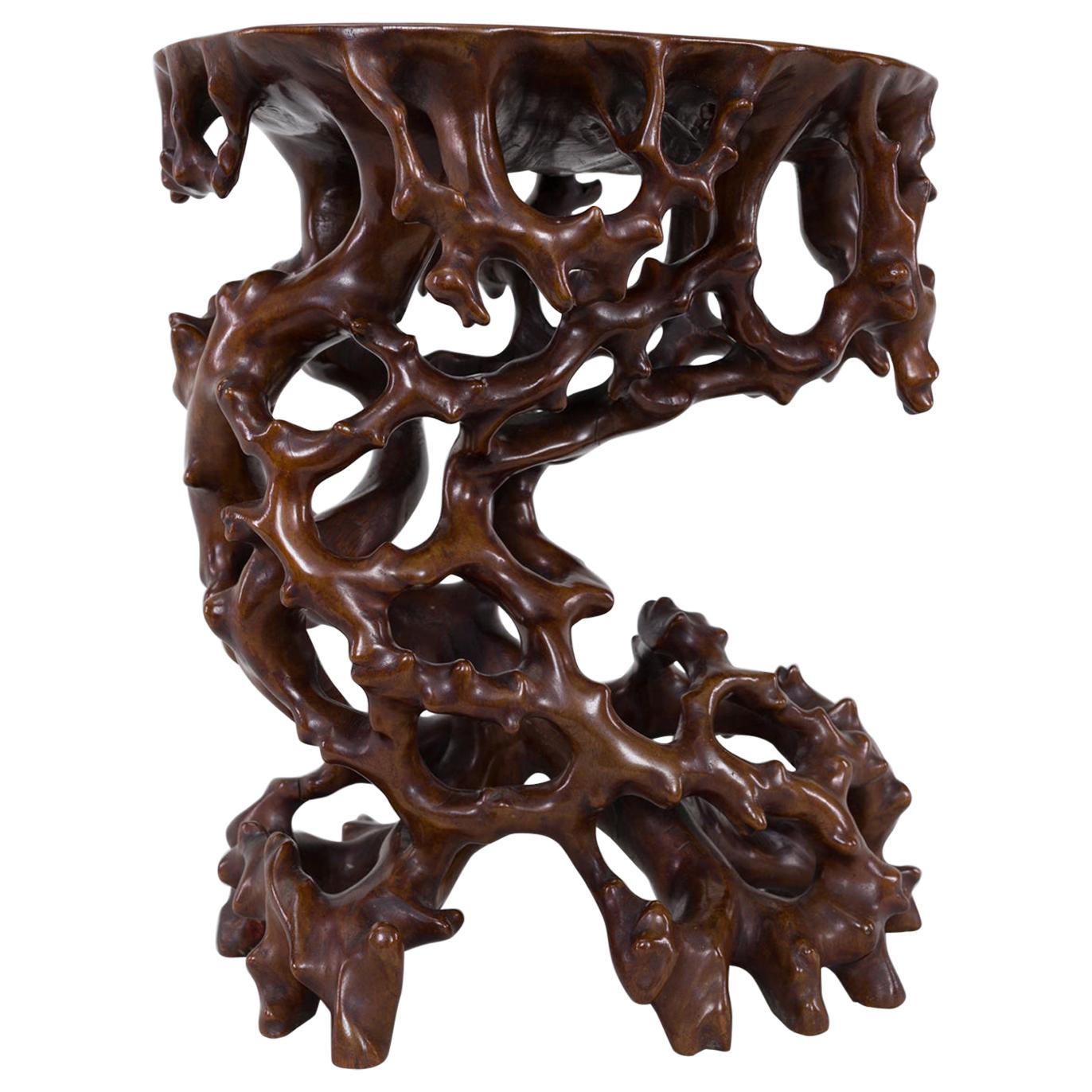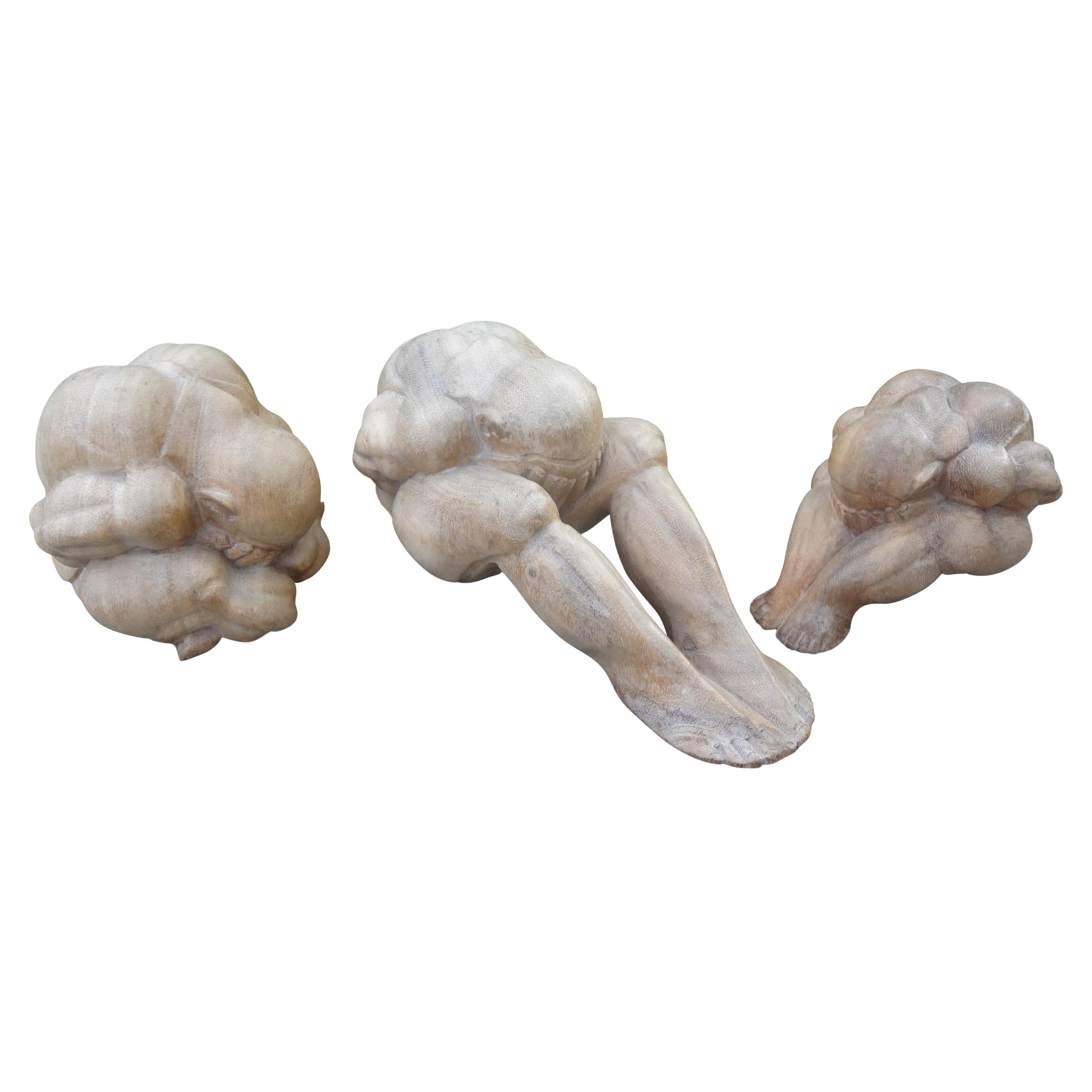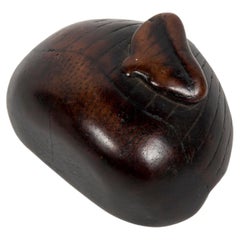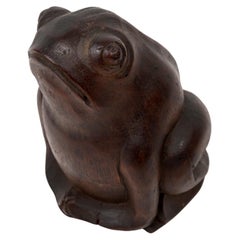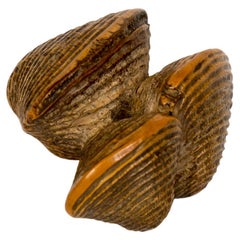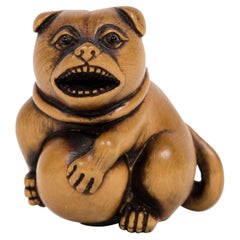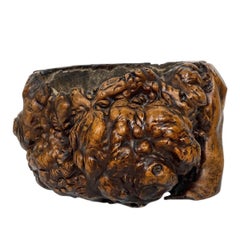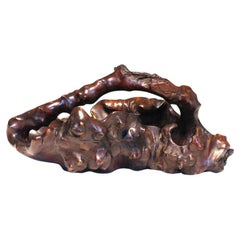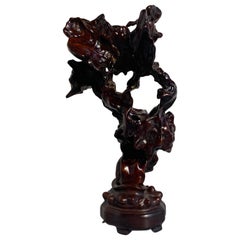Items Similar to Japanese Okimono sculpture of a Chinese cabbage or Pe-Tsai realised in Boxwood
Want more images or videos?
Request additional images or videos from the seller
1 of 6
Japanese Okimono sculpture of a Chinese cabbage or Pe-Tsai realised in Boxwood
$2,155.93
£1,597.66
€1,800
CA$2,943.26
A$3,274.25
CHF 1,716.40
MX$40,010.56
NOK 21,856.26
SEK 20,574.65
DKK 13,705.04
Shipping
Retrieving quote...The 1stDibs Promise:
Authenticity Guarantee,
Money-Back Guarantee,
24-Hour Cancellation
About the Item
Okimono of a Chinese cabbage made in boxwood. The texture and veins have been delicately detailed.
Native from China, it is an herbaceous plant of the Brassicaceae family also locally known as pe-tsai. It is eaten in many ways in Asia: in soup, in salads, stir-fried, in ravioli of filled patties.
Japan – Meiji era (1868-1912)
Height: 5 cm - length : 6.5 cm – Width 4.5 cm
- Dimensions:Height: 1.97 in (5 cm)Width: 1.78 in (4.5 cm)Depth: 1.97 in (5 cm)
- Style:Meiji (Of the Period)
- Materials and Techniques:
- Place of Origin:
- Period:
- Date of Manufacture:1868-1912
- Condition:Wear consistent with age and use.
- Seller Location:PARIS, FR
- Reference Number:Seller: 2021-9101stDibs: LU8311242725832
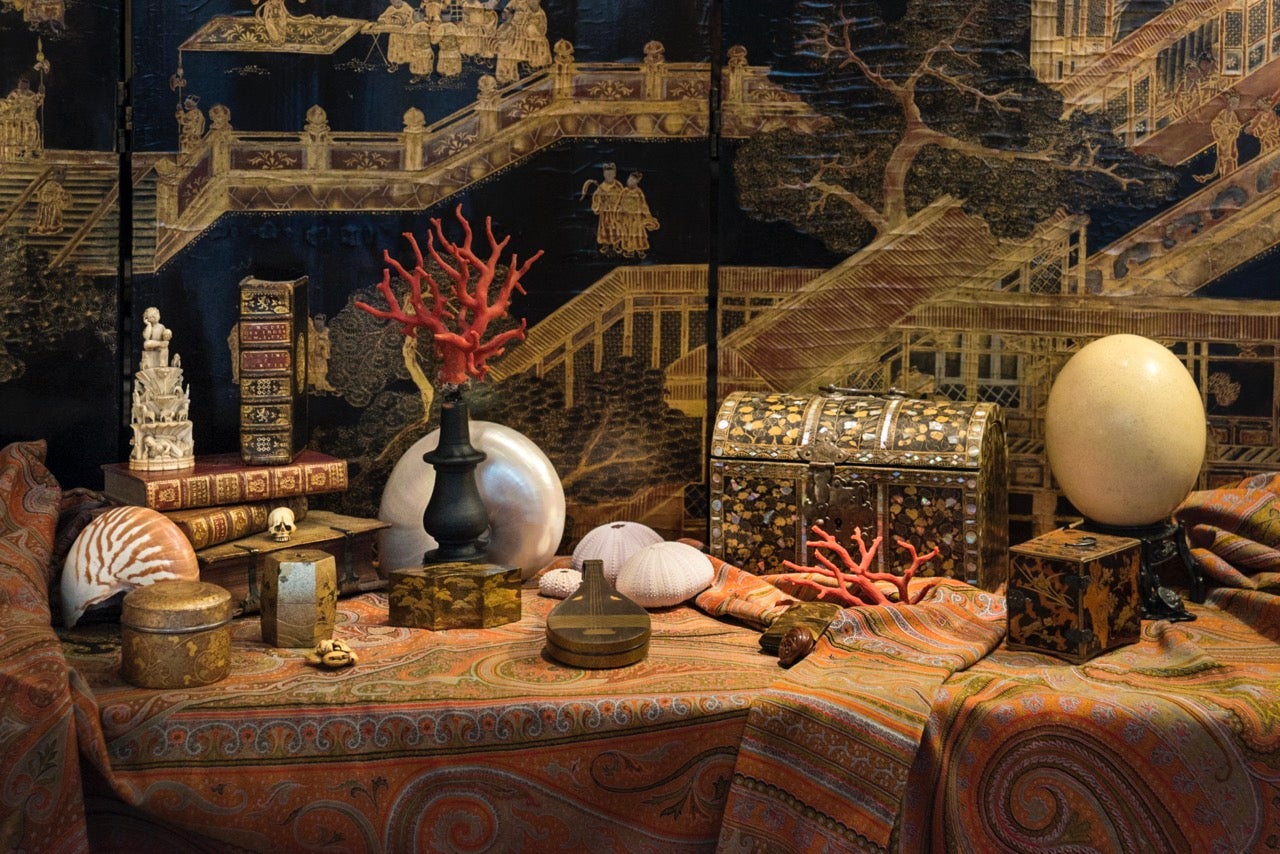
About the Seller
No Reviews Yet
Vetted Professional Seller
Every seller passes strict standards for authenticity and reliability
Established in 2013
1stDibs seller since 2023
Typical response time: Several days
- ShippingRetrieving quote...Shipping from: PARIS, France
- Return Policy
Authenticity Guarantee
In the unlikely event there’s an issue with an item’s authenticity, contact us within 1 year for a full refund. DetailsMoney-Back Guarantee
If your item is not as described, is damaged in transit, or does not arrive, contact us within 7 days for a full refund. Details24-Hour Cancellation
You have a 24-hour grace period in which to reconsider your purchase, with no questions asked.Vetted Professional Sellers
Our world-class sellers must adhere to strict standards for service and quality, maintaining the integrity of our listings.Price-Match Guarantee
If you find that a seller listed the same item for a lower price elsewhere, we’ll match it.Trusted Global Delivery
Our best-in-class carrier network provides specialized shipping options worldwide, including custom delivery.More From This Seller
View AllJapanese Netsuke in Boxwoord in the form of two chestnut
Located in PARIS, FR
Boxwood netsuke of two chestnuts, one smaller on top of the larger.
Chestnuts are a central part of Japanese culture and gastronomy. Castanea Crenata or Japanese chestnut is an indi...
Category
Antique Early 19th Century Japanese Edo Sculptures and Carvings
Materials
Boxwood
Japanese bamboo sculpture of a seated toad realised in the rhizome
Located in PARIS, FR
Bamboo sitting toad. The node of the wood is used as the base of the statuette.
The toad and the frog, referred to by the same term in Japanese (kaeru) are associated with good luck...
Category
Early 20th Century Japanese Taisho Sculptures and Carvings
Materials
Bamboo
Netsuke in boxwood in the form of three clams
Located in PARIS, FR
Boxwood nestuke in the form of three clams or bivalve shells, probably of the Ruditapes philippinarum sub species that can be found all the way from Siberia to Philippines, and Japan...
Category
Antique 18th Century Japanese Edo Sculptures and Carvings
Materials
Boxwood
Japanese Puppy Nestuke in boxwood
Located in PARIS, FR
Netsuke in boxwood representing a puppy with incrusted eyes made of buffalo horns. Its mouth is open, as if it was barking, it also wears a knotted collar and holds a ball between it...
Category
Antique Mid-19th Century Japanese Edo Sculptures and Carvings
Materials
Boxwood
Kobako in natural wood of a frog under a willow tree
Located in PARIS, FR
Small kobako in natural wood made of a circular cross section, lacquered using both the maki-e technique and a transparent finish that grant a glossy finish to the bark. The composit...
Category
Early 20th Century Japanese Taisho Lacquer
Materials
Gold
Japanese Professional sneezer Boxwood Netsuke
Located in PARIS, FR
Boxwood netsuke of a seated professional sneezer depicted as an old man with his right hand raised, holding an stick to tickle himself. His head is slightly raised, his eyes practica...
Category
Antique Late 18th Century Japanese Edo Sculptures and Carvings
Materials
Boxwood
You May Also Like
Late 19th Century Hibachi Tree Root
Located in Pomona, CA
A Japanese Meiji period freeform hibachi from the late 19th century.
Category
Antique Late 19th Century Japanese Sculptures and Carvings
Materials
Wood
Antique Japanese solid wood fruit and flower display basket
Located in Point Richmond, CA
Japanese solid wood fruit and flower display basket, carved from one piece of burl wood in an oval shape with single large overhead handle in a natural form with nodes, grottos and p...
Category
Early 20th Century Japanese Organic Modern Sculptures and Carvings
Materials
Wood
Chinese Burled Hardwood Scholar Rock, Republic Period, 20th Century
Located in Austin, TX
An unusual and striking Chinese scholar rock, gongshi, of polished and lacquered burled hardwood, set into a hardwood base, mid-20th century.
The hardwood scholar "stone" meant to i...
Category
Vintage 1940s Chinese Qing Scholar's Objects
Materials
Hardwood, Burl
European Handcarved Boxwood Snuff Tobacco Flacon
Located in Haddonfield, NJ
European hand carved boxwood snuff tobacco box or flacon with silver screw cap lid. This impressive snuff box depicts a scene with people as well as a large tree. Certainly a fantast...
Category
Antique Mid-19th Century Japanese Japonisme Antiquities
Materials
Boxwood
Antique Japanese Root Stand
Located in Hudson, NY
Antique Japanese root stand. Meiji period (1868-1912) carving from a single piece of fruitwood in a natural root design. Originally made for presen...
Category
Antique Late 19th Century Japanese Meiji Sculptures and Carvings
Materials
Fruitwood
Set of Asian Carved Wood Zen Figures
Located in Houston, TX
Set of Asian carved wood Zen figures.
Great vintage set of 3 carved wood Asian male zen figures or sculptures.
Each figure is in a different posi...
Category
Vintage 1960s Asian Hollywood Regency Figurative Sculptures
Materials
Wood
$895 / set
More Ways To Browse
Japanese Okimono
Chinese Boxwood Carving
Chinese Cabbage
Antique Chinese Boxwood Hand Carved
Chinese Red Coral
Japanese Trunk
Antique Japanese Fish
Carved Wood Chinese Figures
Hand Carved Wooden Buddha
Elephant Carving
India Statue
Antique Japanese Statues
Carved Wood Statues
Green Ming Dynasty
Lantern Light Japanese
Thai Bronze Buddha
Antique Indonesian Art
Edo Period Bronze
